So the stock enclosure leaks when fed by a pipe, so a custom enclosure was needed. There are some pretty good commercial humidifiers which do the job for very little money.
https://www.amazon.com/dp/B07RN87VY2/
Of course, there's no mention of whether they use a MEMS atomizer or a boiler. Ultrasonic, cool, & incompatible with essential oils are good indications of MEMS. With all the problems, it's almost not worth trying to duplicate a humidifier from scratch & probably going to cost more. They all use a gravity fed water tank. The outlet always points up.
There's not really enough room on the table to put a humidifier with much of a water tank anywhere. A pump made out of a hobby motor was to separate the water tank from the transducer, but it's really complex with a 2nd voltage & electronicals.
With the transducer removed from the stock enclosure, it was possible to document the inlet facing side.
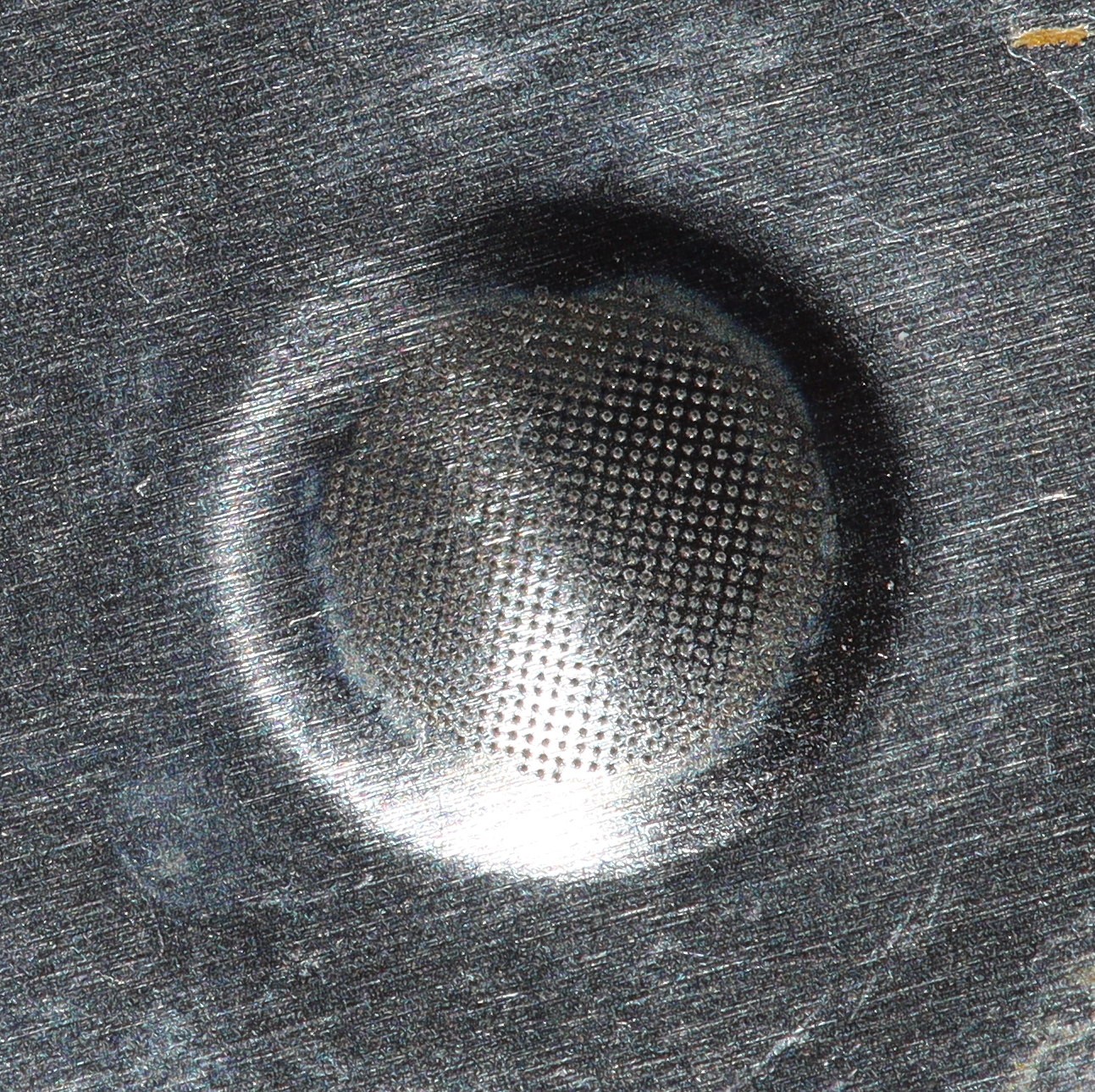 100mm Macro
100mm Macro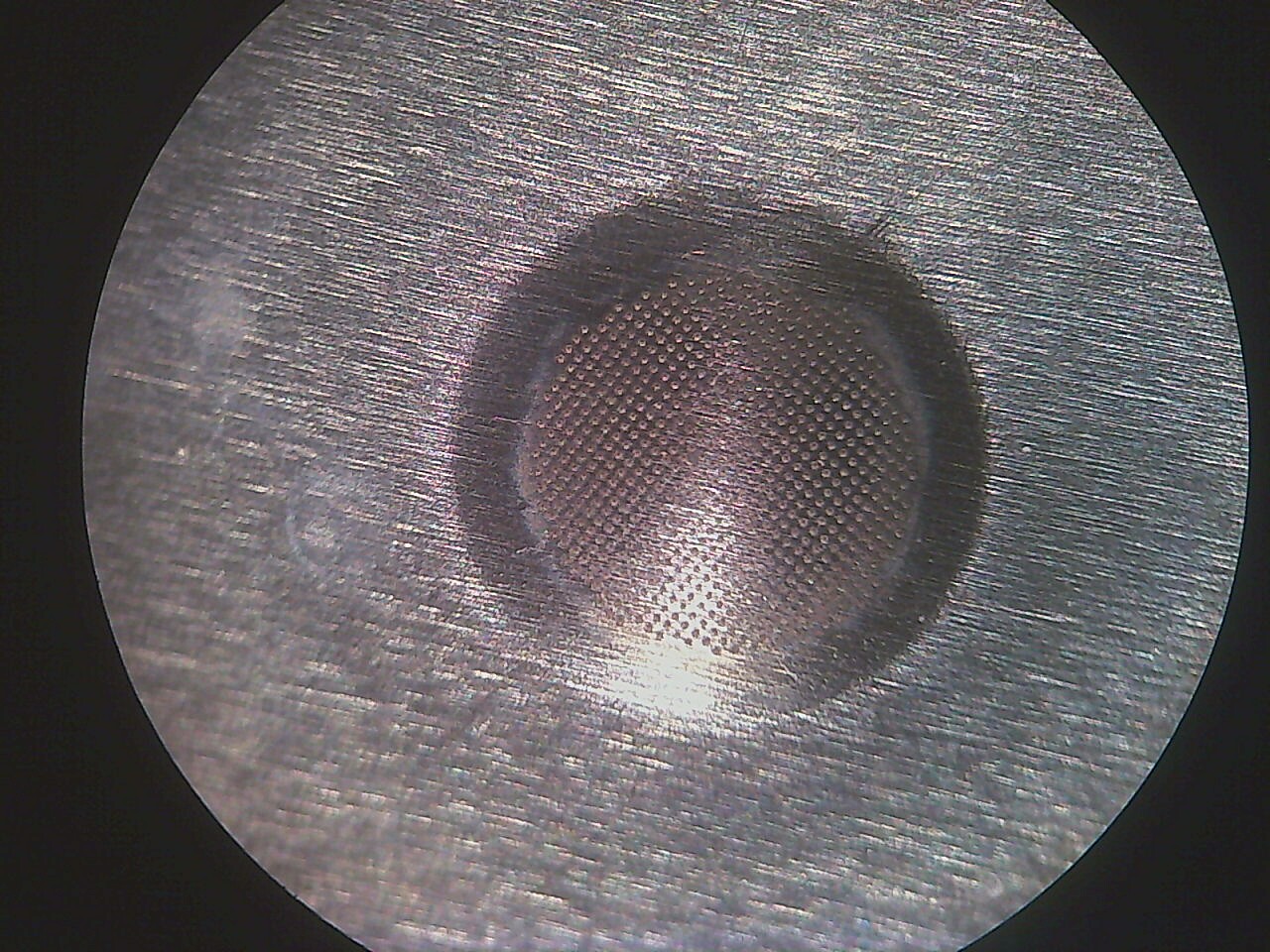
20x
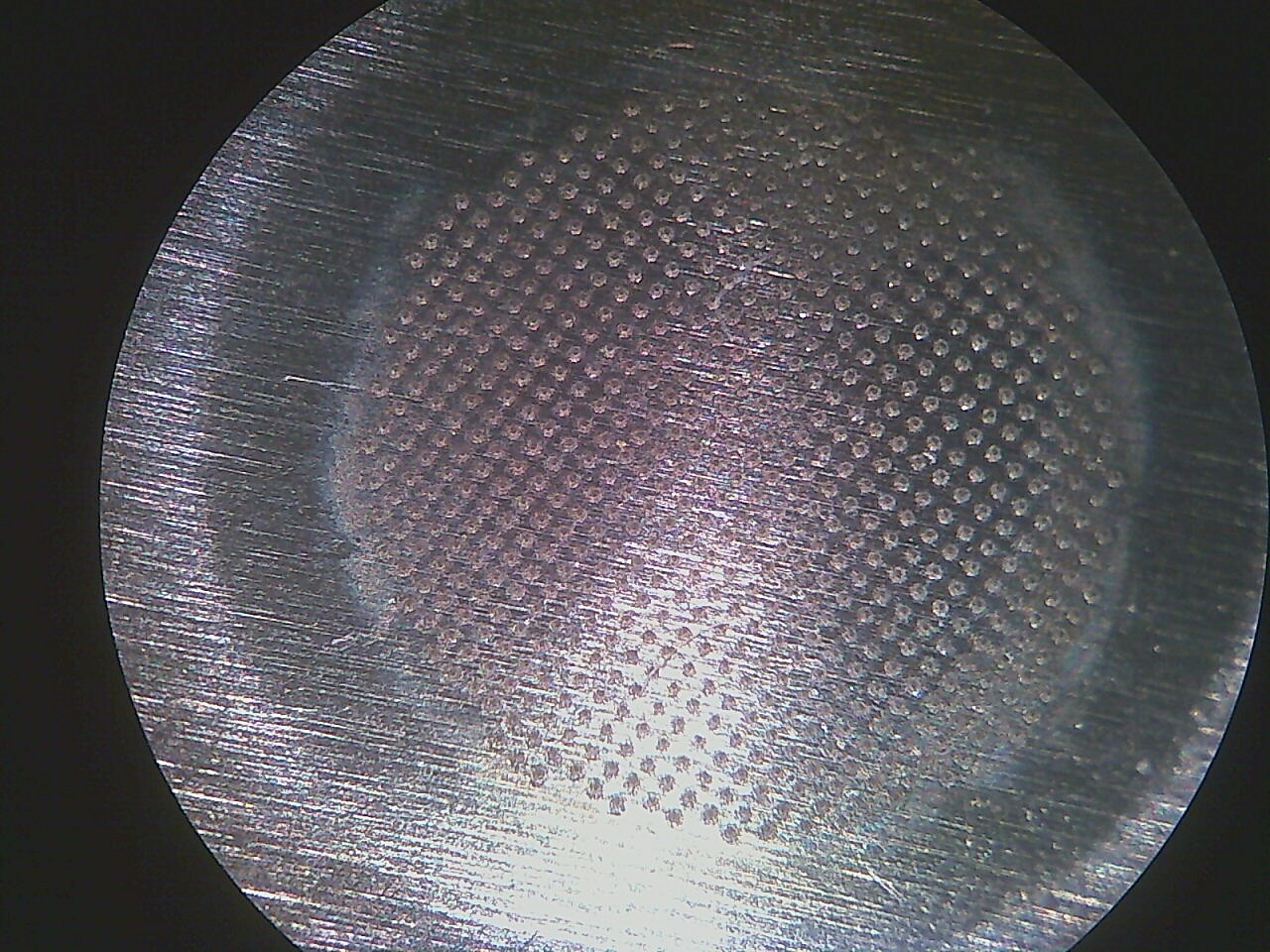
40x
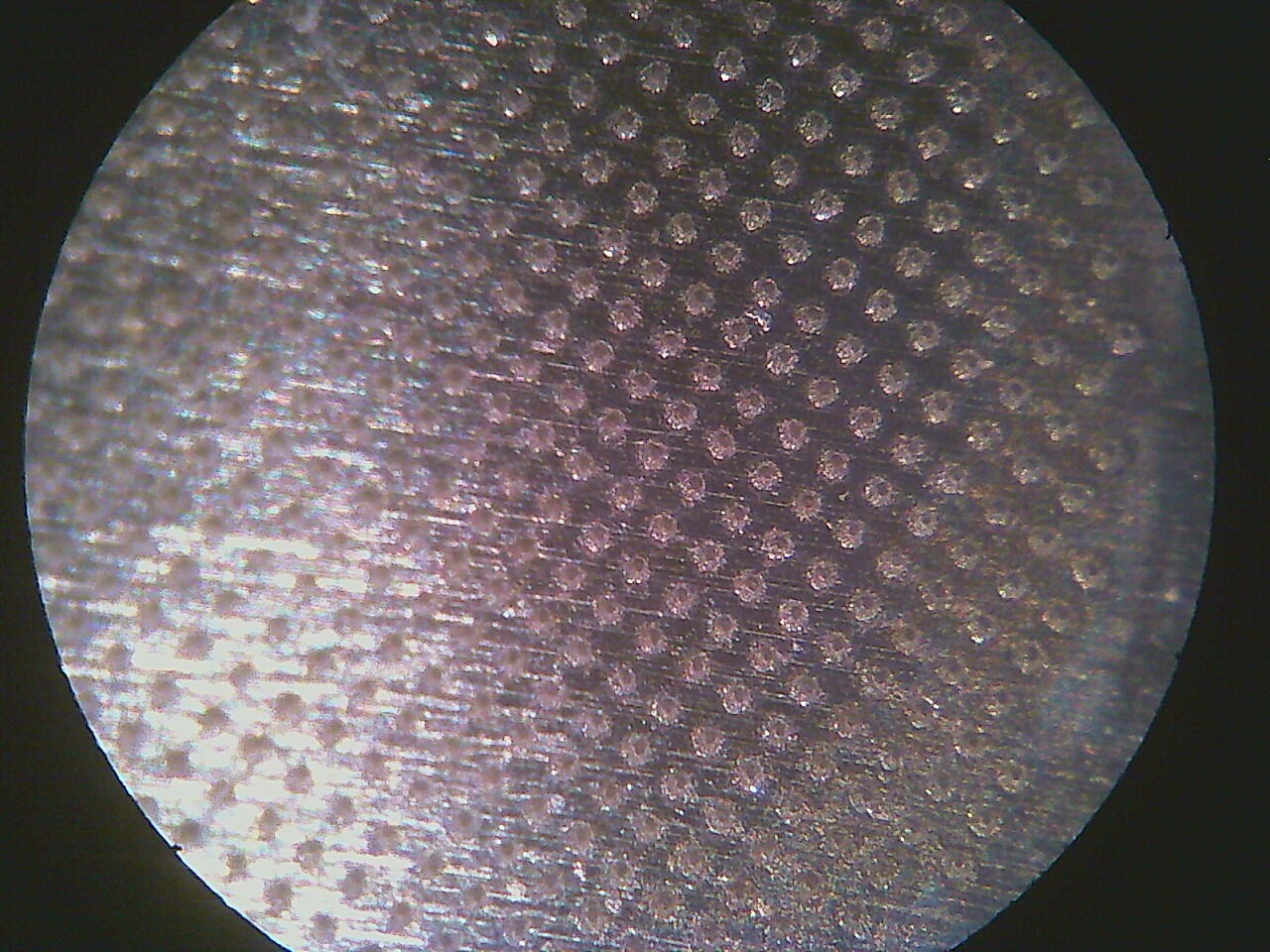
80x
The lion kingdom's microscope game could be a lot better. It's still a webcam because it's hardly ever used. The holes were not visible from the outside at any magnification. There's no simplified explanation of how MEMS atomizers work, only a few chinese research papers. It appears to be just a titanium plate with holes etched in it. The smooth metal is where a photoresist once was. The acid created a rough surface around each hole.
The titanium plate vibrates rapidly. There's a film of water on the outside. According to kiwipedia, the vibration creates capillary waves on the outside. The capillary waves become too tall to support themselves & tiny drops fall off the tip of each wave.
There's no slow motion footage of a MEMS atomizer. It's not obvious why the mesh has to be a dome other than to show the user where the water comes out or to strengthen it.
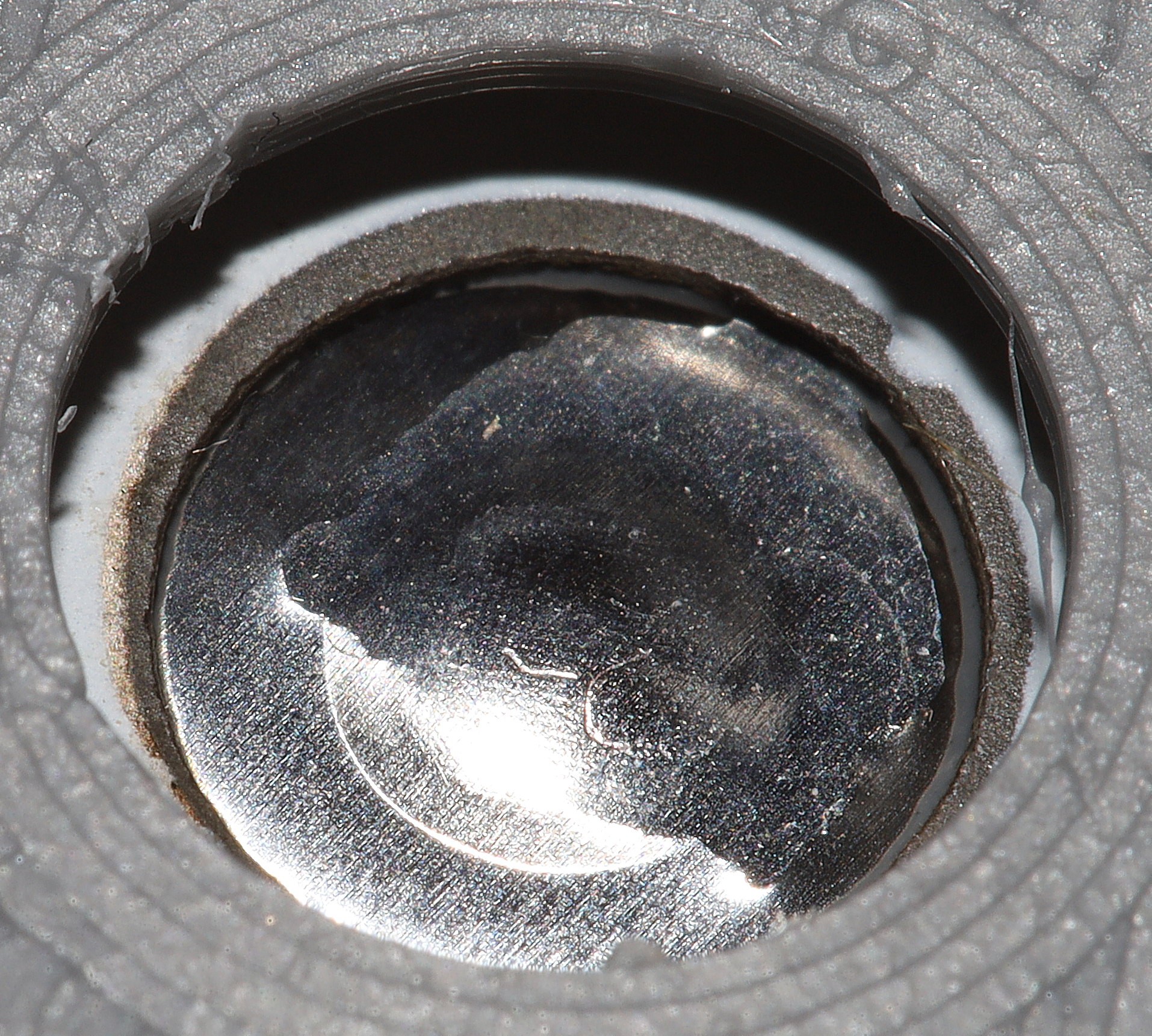
After observing cracks forming on the outside, the mode of failure is believed to be work hardening of the metal over many hours of vibration. Eventually, it just cracks.
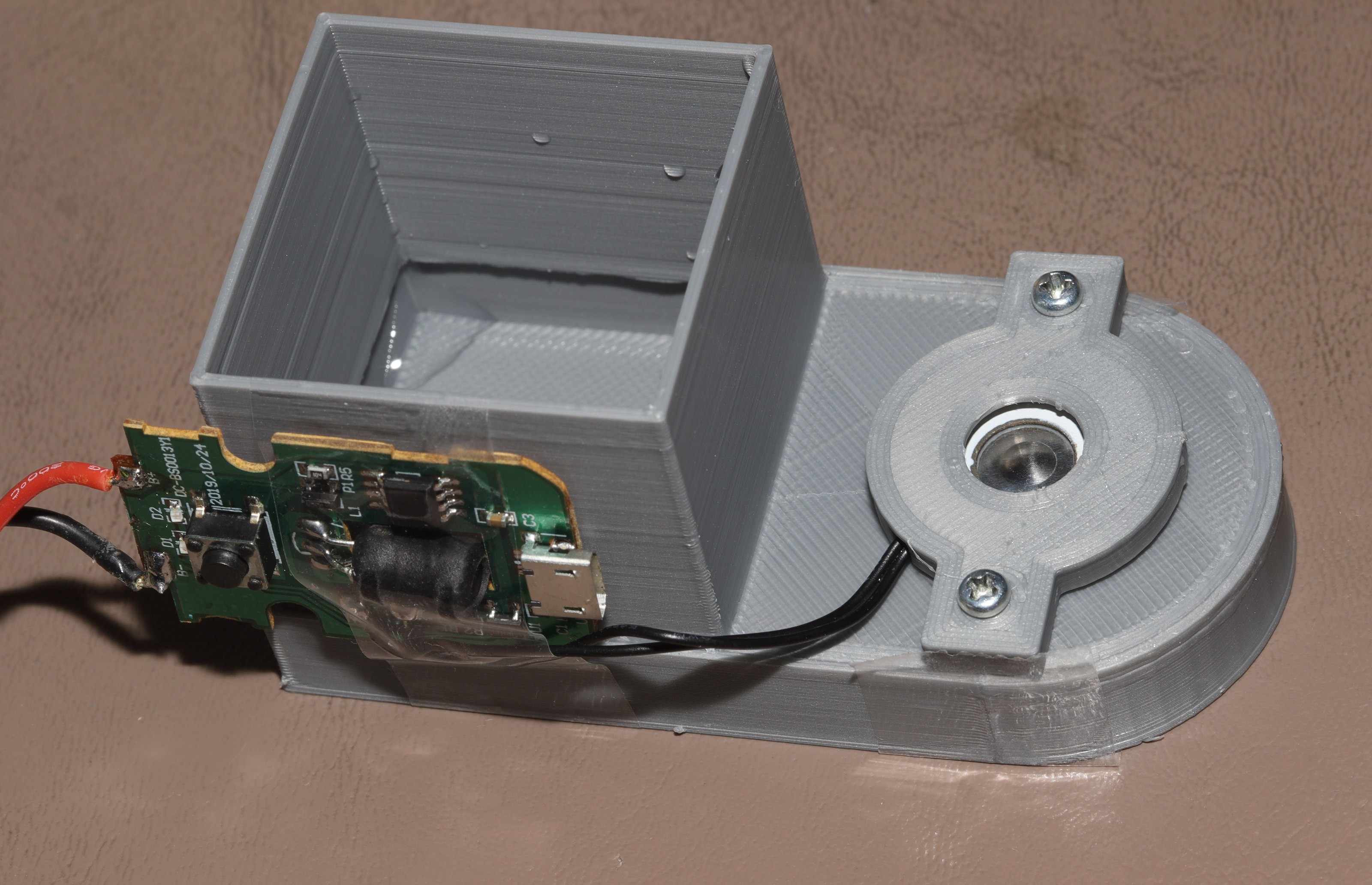
Custom enclosure #1 had a lot of leaks. The printer can't print smooth surfaces so the transducer couldn't make a water tight seal. The screw holes leaked. Facing up was definitely the best way to point it.
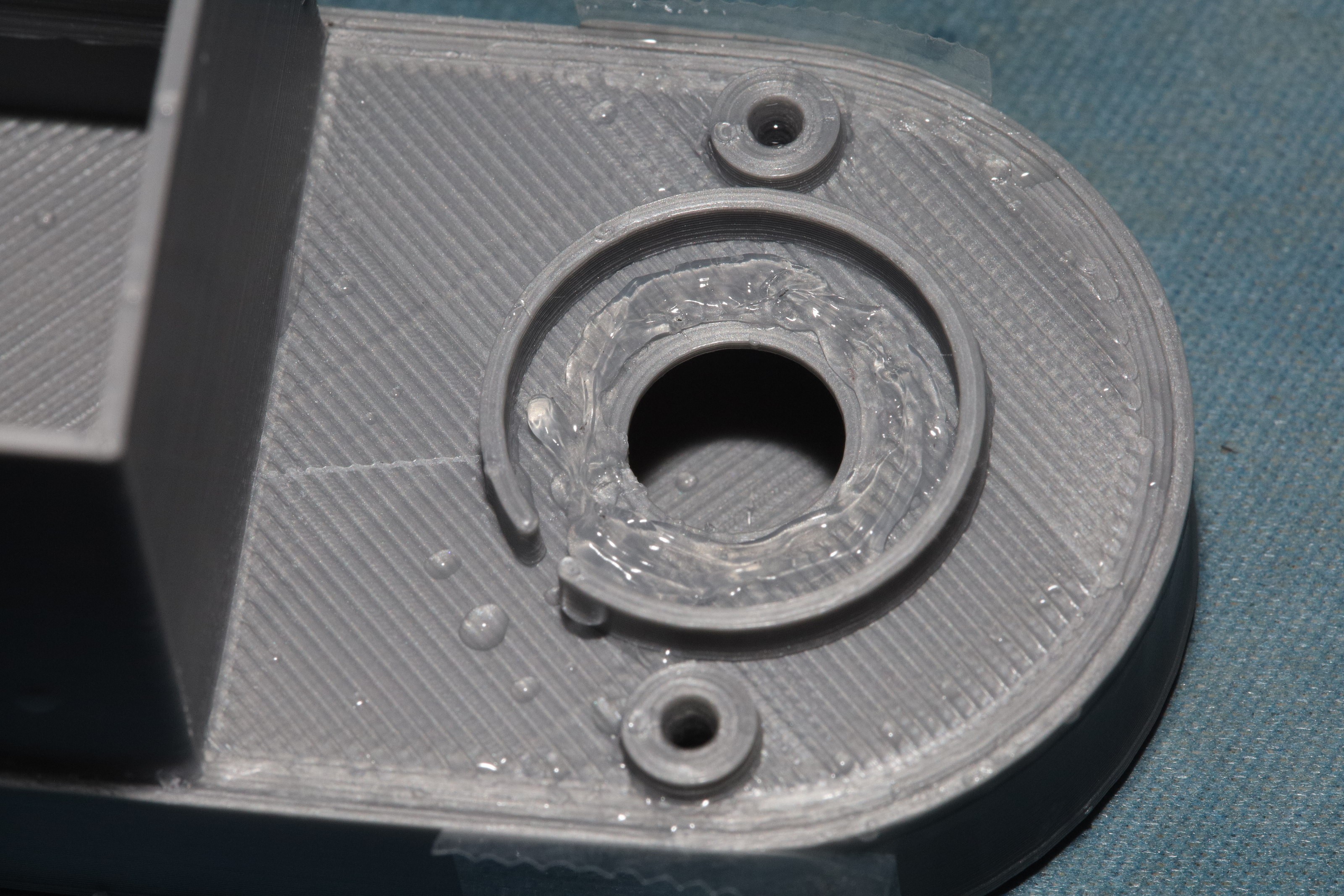
The best way to seal the screw holes was just to add glue where the water could leak out. Adding silicone grease under the transducer made a water tight seal against the uneven printing.
It worked for a few seconds after refilling the tank, then died until the tank was drained & refilled again. It was believed to be forming air bubbles under the transducer. Instead of floating up in the original side firing arrangement, they stayed in place until it died.
The vertical firing products obviously have more going on to feed the transducer than just dunking it.
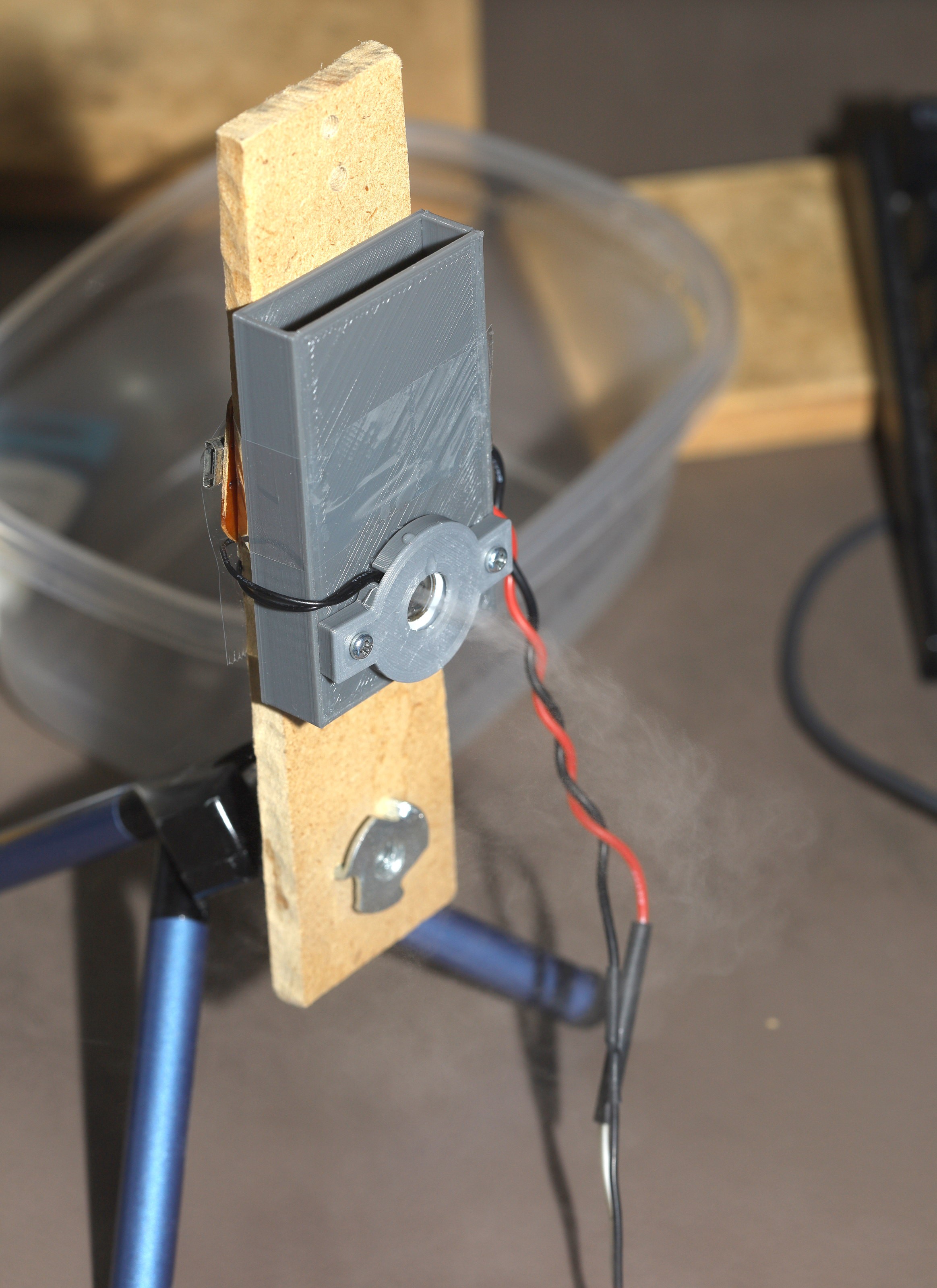
Enclosure #2 solved the air bubble problem.
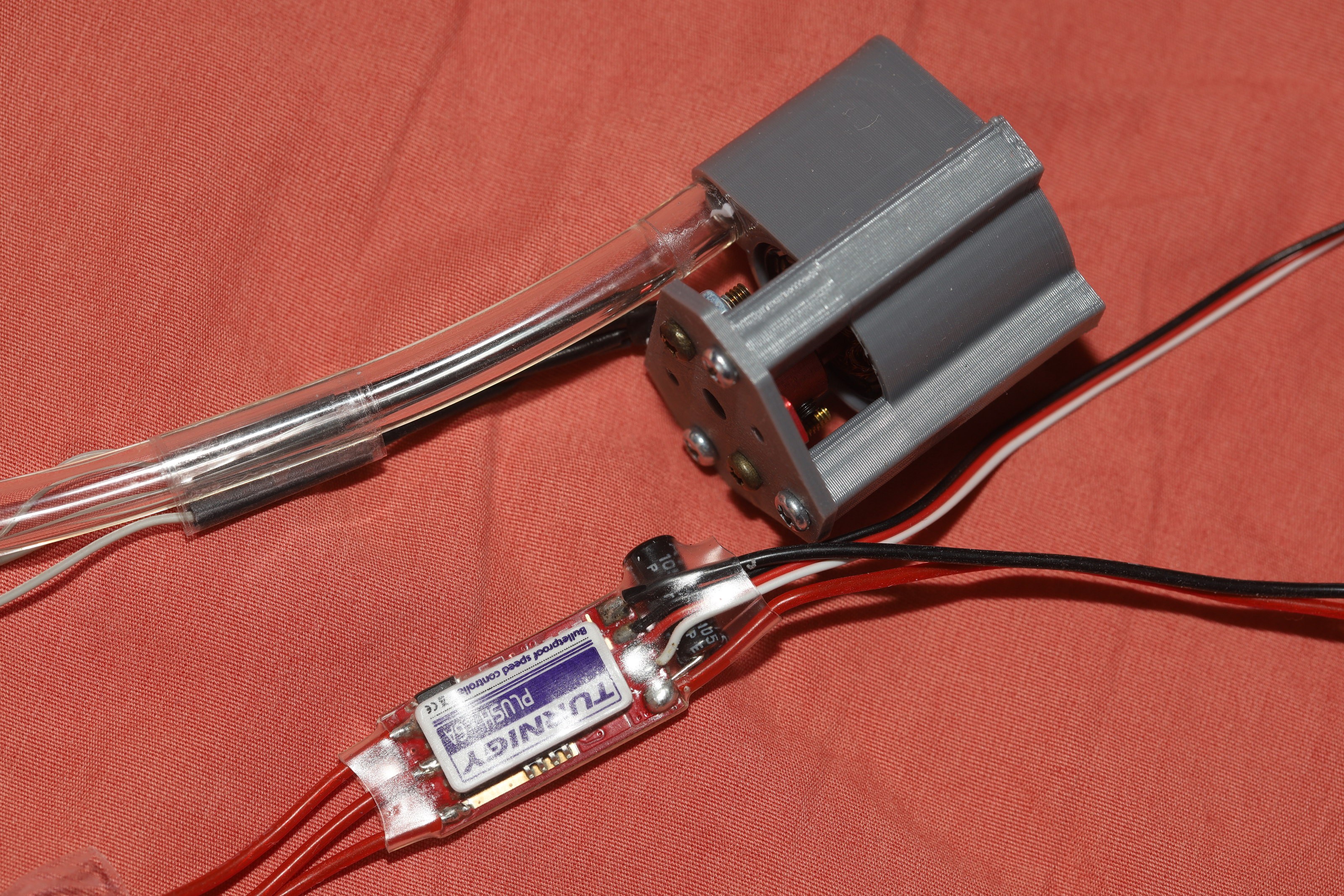
A new ESC didn't beep when the motor was off. Castles beep. Turnigies don't. This one required 7V.
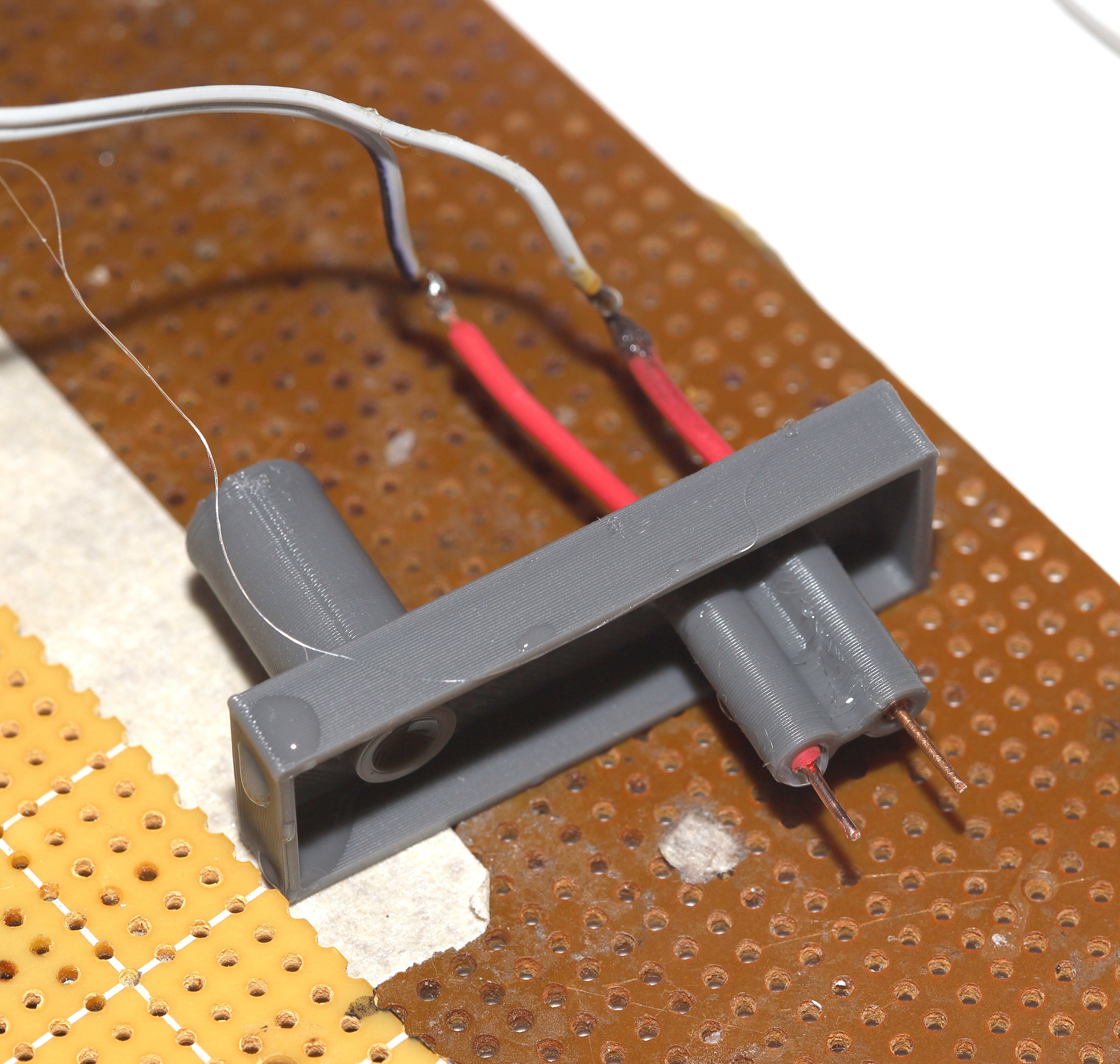
The best way to detect water level was just measuring resistance.
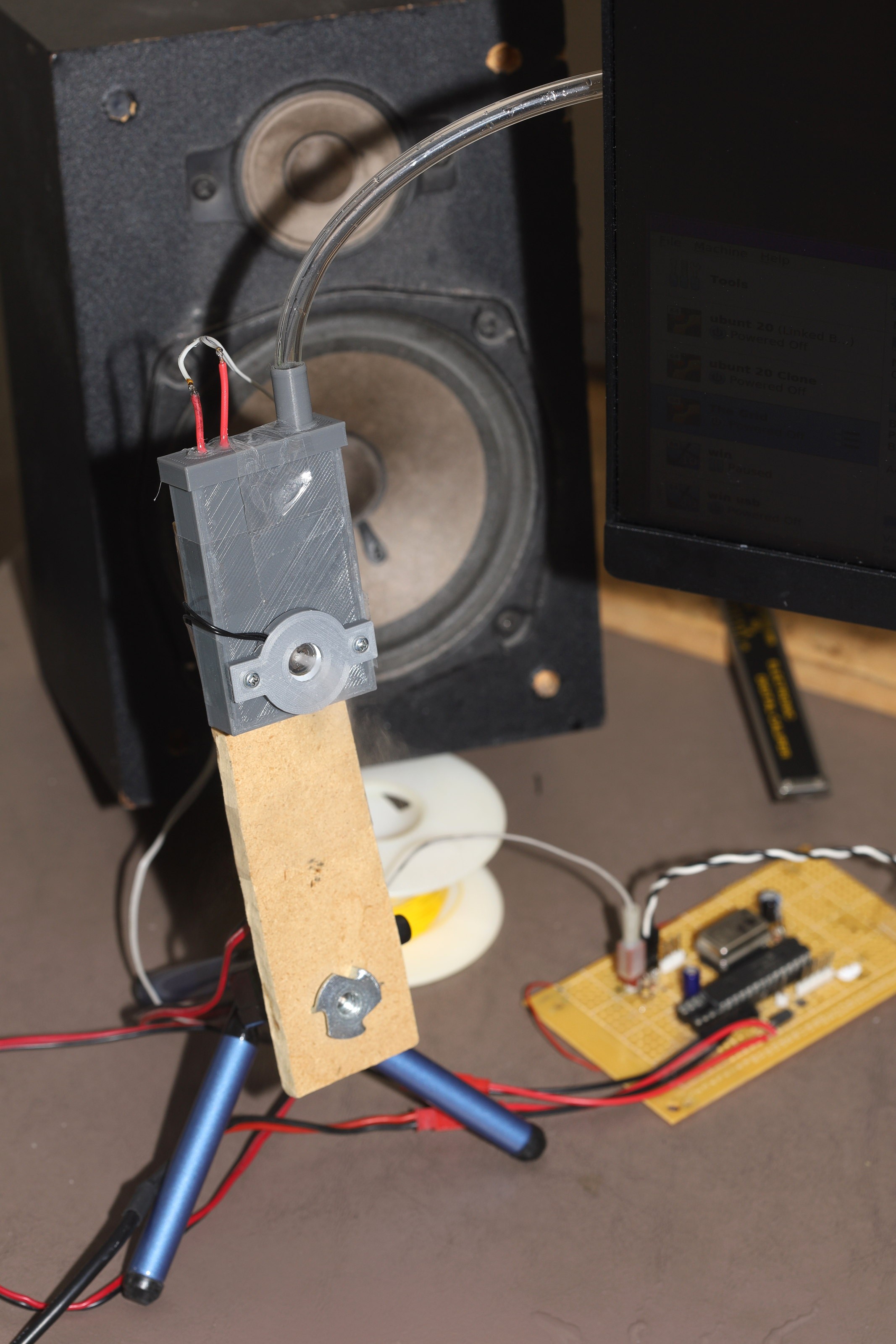
Atomizing with the automatic water pump worked.
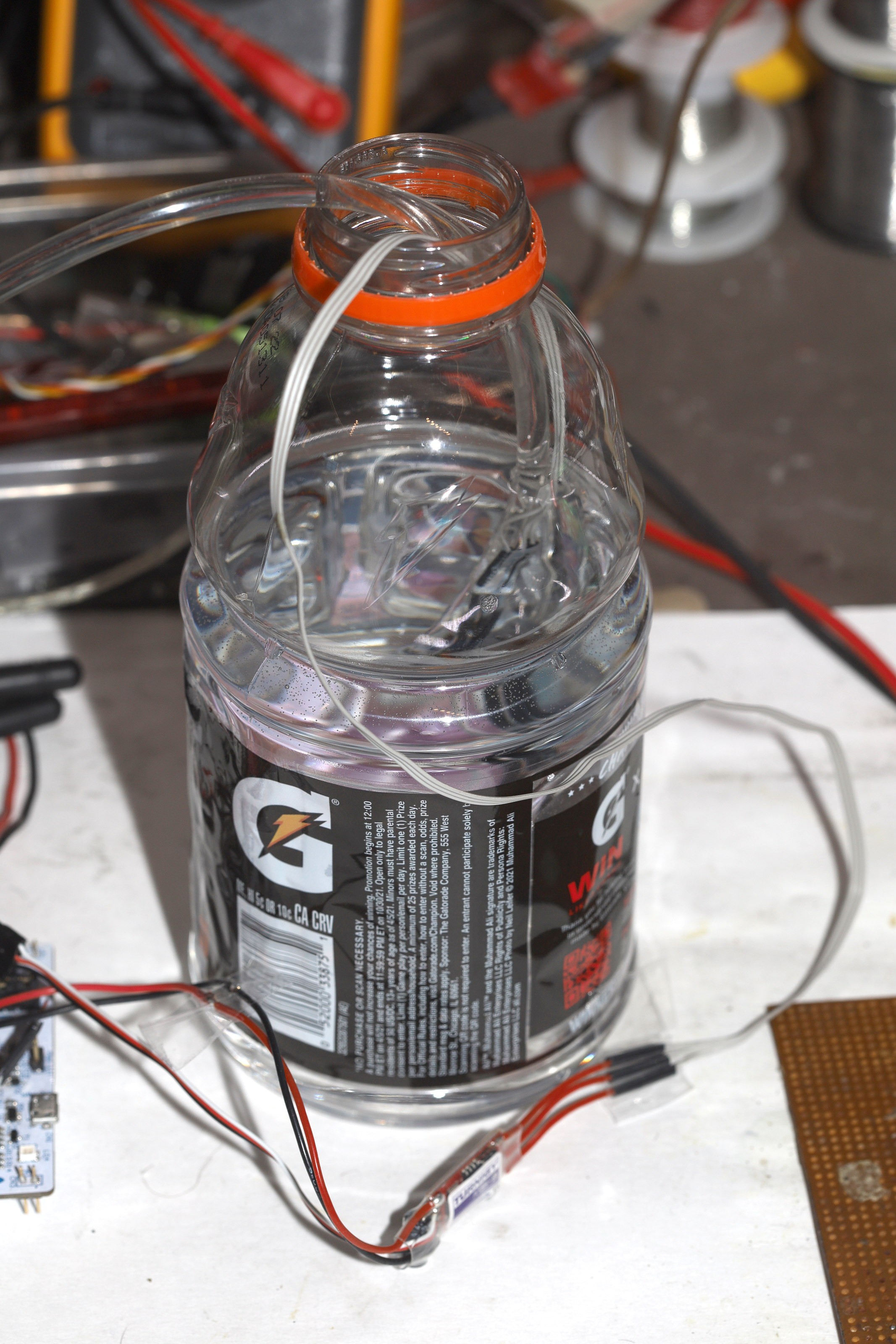
The next problems were manely with the water sensor. It needs 2 sensors to give it hysteresis. Otherwise, it constantly spins in stall mode while the ESC gets hotter & hotter.
The sensor needs to be securely farstened. If it falls off, it'll pump the entire gatorade bottle on the floor.
5V needs to come from the ESC so everything has 1 power source.
It needs a way to arm the water pump. The ESC has to detect idle speed when it comes on. If the ESC is turned off while the transducer is moving water out, there's no way to turn the ESC back on without turning off the transducer.
All the electronicals & the transducer should be self contained.
It's still fussy to get the transducer started. It still seems to get air bubbles. An automatic button presser to defeat its 5 minute timeout might make it more useful, but it's always going to need attention.
With that in mind, it's not very effective in the hottest weather. It needs to be expanded to 3 transducers.
 lion mclionhead
lion mclionhead
Discussions
Become a Hackaday.io Member
Create an account to leave a comment. Already have an account? Log In.